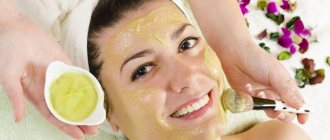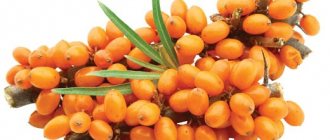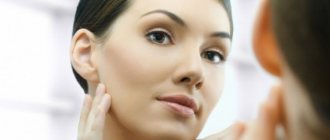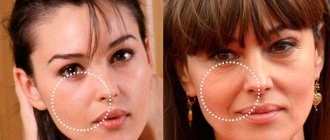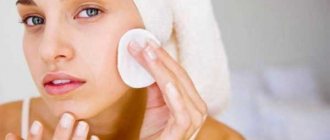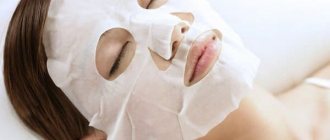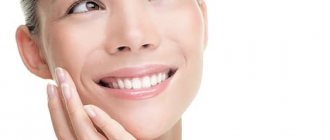Taking care of your skin in winter requires more effort than in summer. At this time of year, the body receives fewer vitamins and is affected by aggressive external factors.
In winter, the skin often flakes and becomes dry, so it needs to be moisturized and nourished. Lack of moisture and nutrients leads to complexion dulling, fine wrinkles appearing, and the firmness and elasticity of the skin decreases. But with proper care, all this can be avoided.
- Dry and normal
- Young skin
- Natural oils
How to get rid of itching on the body
Severe drying of the skin can cause severe itching and discomfort.
What should you do to protect yourself from this trouble? Severe dryness may cause severe itching on the body.
- When going out into the cold, protect exposed skin as much as possible. Lubricate your face and hands with greasy cream or Vaseline. Dress as warmly as possible to prevent hypothermia. Wear tights and warm socks on your feet, choose underwear from natural fabrics, and don’t forget about a winter hat and scarf. Instead of gloves, it is best to wear mittens; they will help your hands always stay warm.
- Take vitamin D in winter, which is sold in pharmacies in the form of drops.
- Monitor the humidity in the apartment and do not allow the room to dry out. Buy an air humidifier that will help maintain the necessary humidity in the apartment during the heating period. The drier the air, the greater the likelihood of problems with the epidermis.
- Avoid sudden changes in temperature. If possible, do not go outside at temperatures below 20 degrees, so as not to provoke frostbite and the occurrence of various inflammatory diseases.
- Itching can be triggered by the sun's rays, which in the cold usually have a very aggressive effect on the epidermis. Use cosmetics that contain ultraviolet protection.
- Avoid visiting the solarium at least in the autumn-winter period.
- Choose soap that contains natural ingredients.
If all of the above methods do not help to avoid itching and flaking, and especially if the skin is cracking, be sure to consult a cosmetologist to prescribe treatment. Of course, there is a possibility that the itching may go away on its own, but there is also a possibility that it will trigger the development of more serious diseases. To prevent this, it is necessary to begin proper care of the affected skin in time.
If you cannot cope with the problem of dry skin on your own, then you should consult a cosmetologist.
Additional recommendations
For good skin condition in winter it is important:
- Drink at least 1.5 liters of fluid per day. Green tea, rich in antioxidants, as well as herbal teas give good results.
- Watch your diet, eat more seasonal vegetables and fruits, as well as foods that contain a lot of omega-3 fatty acids (sea fish).
- Take vitamin complexes periodically.
- Wash your face correctly - use warm (but not hot) and cold water in turn. A contrast shower is useful.
- Include moderate physical activity in your daily routine.
- Protect your facial skin while walking by applying a protective or nourishing cream before leaving the house.
- Create a healthy microclimate in the apartment (temperature - 20-22 degrees, humidity - 50-60%), if necessary, use a humidifier.
Effective recipes for winter masks
The use of masks is considered an important element of skin care in winter. It is best to apply such compositions in the evening. It is at this moment that the skin better perceives the action of active substances that are present in cosmetic products. Before using masks, you should thoroughly cleanse your skin of dirt and cosmetics. For this purpose, you should use cream or cosmetic milk. Typically, it is recommended to keep such substances on the face for 15-20 minutes. Then you need to wash your face with warm water. An equally good option would be herbal decoction or green tea.
After thoroughly cleansing your face from the mask, you need to cover it with a nourishing cream. The composition is selected taking into account the type of dermis. To achieve noticeable results, home remedies should be applied at least 2 times a week. It is recommended to do this all winter.
Orange mask
This composition is ideal for oily skin. With its help, it is possible to narrow pores and cope with oily shine. In addition, the substance has a nourishing effect on the skin and helps soften rough skin.
To prepare the product, you need to take 2-3 orange slices and grind them using a blender. Add 30 g of low-fat cottage cheese and 10 ml of grape seed oil. Mix thoroughly and add egg white to the mixture.
You need to treat your face with the finished product. It is recommended to apply it in several layers. In this case, each layer should dry out a little. After 20 minutes, you need to wash your face with water at room temperature. Applying cream after manipulation is not recommended.
Herbal mask
This product is an ideal solution for those with dry skin. The substance perfectly eliminates severe peeling. It also has pronounced moisturizing and soothing properties. With the help of a mask, you can get rid of the unpleasant feeling of tightness of the dermis.
To get a healthy product, you need to take 20 g of chamomile and 10 g of plantain and mint. Pour the composition into 100 ml of boiling water and leave for half an hour. Add 50 starch to the strained product. Then pour in 15 ml of olive oil and treat your face. After half an hour, the composition can be washed off with cool water and a nourishing cream can be applied.
Carrot mask
This composition is ideal for improving complexion. It helps to cope with irritation, normalize the condition of affected skin, fill it with energy and improve its tone.
To achieve excellent results, you need to mix 30 g of cottage cheese with 20 ml of peach oil. Add 30 ml of milk and fresh carrot juice. Mix all ingredients and apply the prepared mixture to your face. After 20 minutes you should wash your face. This is best done with cool water. Finally, treat your face with nourishing cream.
Oatmeal mask
In winter, the skin is often exposed to the negative effects of wind. As a result, the dermis becomes rougher, peeling and roughness appear on it. The cosmetic composition of oatmeal helps to cope with irritation of the epithelium, eliminate hyperemia and peeling.
To get an effective product, you need to take 20 g of oatmeal and add 50 ml of hot milk. Leave the mixture to swell. Then you need to add egg yolk and 30 g of honey into the product. Mix everything well and apply the mixture to your face. After 20 minutes, you can wash your face with warm water.
Coffee mask
This product is recommended for those with mature skin. It allows you to make your face look fresher, cope with minor wrinkles and normalize the tone of the epithelium. To achieve a noticeable effect, you need to take 50 g of coffee grounds and add 30 g of honey and full-fat sour cream to it.
The prepared mixture should be applied to the face. After 20 minutes, you can clean your face with a damp sponge. Then it is recommended to wash your face several times, alternating warm and cool water.
Winter facial care must certainly be comprehensive. To prevent the negative effects of external factors on the skin, it is necessary to select effective cosmetics. In addition to ready-made products, you can use effective homemade recipes. Thanks to this, you will be able to look perfect even in the coldest weather.
Cleansing
The skin also needs cleansing in winter. But you should use the scrub no more than once a week.
Cleaning is recommended to be more delicate than in summer. Therefore, it is important to choose the right scrub. It should have small and smooth particles that will not injure the skin. It is worth looking for a scrub with wax granules, such as jojoba.
It is recommended to avoid alcohol lotions that dry out the skin, replacing them with soft foam or special cosmetic milk. But in addition you need to exfoliate.
Scrub for dry skin
At home, you can make a scrub from oatmeal. To do this you need:
- Take 1 tbsp. l. cereal.
- Pour them 3-4 tbsp. l. boiling water
- Leave for 5-10 minutes.
- Apply to skin with massage movements and rinse.
This scrub is also suitable for those with combination skin types. It cleans well and does not injure it.
Scrub for oily skin
For oily skin, a coffee scrub is suitable. To do it, you need:
- Take fresh coffee grounds (preferably finely ground coffee).
- Mix with sour cream in equal proportions.
- Rub gently into skin for a few minutes.
At the end of the procedure, rinse off any remaining product and apply a moisturizer.
Care for mature skin in winter.
To protect, nourish and moisturize more mature skin in winter, it is necessary to use anti-aging creams that contain natural phytoestrogens and herbal ingredients.
A new product from the cosmetics company Yves Rocher - a set of cosmetics based on the latest technologies, the Anti-Age-Global program with natural plant cells, guarantees intensive stimulation of metabolic processes.
The composition of anti-aging creams, day and night, from the “Power over Time” series, from the Oriflame cosmetics company, includes phytoestrogens, seaweed peptides, and gold microparticles. The complex formula of the cream allows you to stop the process of hormonal changes and restore elasticity to the skin.
The Garnier anti-aging series, which includes day and night creams containing fig extract, vitamins C and A, and eye contour cream, corrects facial contours, smoothes out wrinkles, and restores elasticity and freshness to the skin.
Winter face masks.
A refreshing and stimulating mask with pomegranate extract, when used 2-3 times a week, will give you a feeling of freshness. A mask with grape extract “Tonus” has a gentle lifting effect and deep hydration of the face. The “Vegetable Moisturizing” Face Cream Mask has the same effect.
Nourishing mask for dry and sensitive skin, which contains acacia honey and Karite oil, nourishes and moisturizes the skin.
A moisturizing mask with grape juice extract and vitamin E has an intense moisturizing and stimulating effect - the face, after using the mask, looks fresh and rested.
Features of winter nutrition - for beauty.
First.
In addition to the basic rules of healthy eating, include in your diet a high content of fats and proteins of plant and animal origin.
These are cottage cheese, sour cream, butter and vegetable oils, chicken and beef meat, fatty sea fish, eggs, nuts and legumes. Don't worry about it having a negative impact on your weight. In winter, in conditions of cold and shortened daylight hours, the body needs an increased amount of energy for life.
But you will meet spring not with pale-faced and withered squaws, with vitamin deficiency and pessimism, but with completely blooming and cheerful ladies.
Second.
Limit your coffee consumption and partially replace it with green tea with lemon and honey, or infusions of medicinal herbs: St. John's wort, mint, lemon balm, rose hips. This will help not only replenish the daily loss of moisture in the body, and the skin in particular, but also strengthen the immune system. And coffee speeds up the process of fluid removal and dehydration of the body.
Third.
Buy capsules with fish oil, vitamin A and E at the pharmacy. It is better if these are separate capsules and not the drug “Aevit”. These vitamins are the strongest antioxidants that slow down the aging process of the skin, and fish oil contains Omega-3 fatty acids, essential for beauty and health. You can read more about vitamins for beauty and youth.
Carefully and properly care for your facial skin in winter, and you will greet spring fresh and well-groomed.
You may be interested in this article
Age-related features of care
At different ages, the rules for skin care in winter are somewhat different.
Young skin
Young skin in winter is more prone to acne and inflamed areas. Paradoxically, the cause is dry skin, which leads to disruption of sebum production. The glands produce more secretion, and its excess clogs the pores.
As a result, acne appears on the face. In winter, they cannot be dealt with using conventional acne products, as they will dry out the skin even more. The solution is to maintain balance. Proper cleansing and delicate peeling play a vital role.
Conventional anti-acne products can only be used in the evening, provided the skin is well moisturized. They should not be used every day, but 3 times a week.
Mature skin
Mature skin has its own problems. After 50 years, exposure to frost is a severe stress for the skin. It is clear that it is not always possible to avoid the influence of cold air. Therefore, you need to choose a good protective cream. Products with a thick consistency are suitable for aging skin. You should carefully read the composition - it should contain gammalinoleic acid, which helps retain moisture even in very dry skin.
Before leaving the house, no later than half an hour before contact with cold air, mature skin needs to be warmed up. To do this, apply a warm compress:
- Soak a clean cloth napkin with a decoction of mint or linden (1 tablespoon of raw material per glass of boiling water).
- Apply the napkin to your face and hold it until it remains warm.
- When the skin is warmed up, apply a nourishing cream.
You can replace the procedure with a warm massage. It is done using a teaspoon heated in hot water, which is used to gently massage the face lubricated with nourishing cream. This massage should also be completed 40 minutes before leaving the house.
Rules for choosing face cream in winter
First of all, you need to determine your skin type. The effect of creams differs significantly for different types. Therefore, an incorrectly selected product can aggravate problems and add new ones.
For oily skin
The oily type needs protection, hydration and nutrition no less than the dry type. The cream should perform these functions and at the same time be non-comedogenic. Choosing such a tool is not so easy, but it is possible.
The optimal cream for oily skin has the following properties:
- moisturizes and nourishes the skin;
- retains moisture;
- absorbs excess sebum;
- exfoliates;
- relieves inflammation.
Fruit acids provide a moisturizing and exfoliating effect, so their presence in the composition is welcome. They also improve the condition of problem skin.
It is worth paying attention to creams based on extracts of medicinal plants. Especially useful for oily and problem skin are products with chamomile, calendula, lavender, arnica, sage, oregano, and hawthorn.
In addition, the following oils are preferred:
- tea tree;
- lemon;
- rosemary;
- mint;
- grapefruit;
- ylang-ylang;
- lemongrass;
- almond;
- grape seeds.
For combined
Combination types often benefit from the same creams as oily ones. However, there are special products for mixed skin. They perform the same functions, but the nutrition is more intense. The following may serve as auxiliary components:
- plant extracts - lemon balm, eucalyptus, millennial, linden;
- oils - sea buckthorn, peach, sesame, apricot kernels, jojoba, coconut, geranium, rose.
For dry
In winter, dry skin is especially prone to tightness and flaking. If in warm weather you can get by with moisturizers, then with the arrival of cold weather you need to think about nourishing the skin. The cream should perform several functions:
- moisturize;
- supply;
- protect from drying out and dehydration;
- calm down.
First of all, the composition must contain oils. They will provide the skin with nutrition and replenish the lack of nutrients.
The following types are especially valuable for the dry type:
- shi;
- mango;
- macadamia;
- jojoba;
- apricot;
- sesame;
- soy;
- borage (borage seeds);
- neroli.
Plant extracts will take care of moisturizing and toning the skin, stimulating regenerative processes. In this regard, extracts of algae, coconut, rose, sage and St. John's wort are effective.
For the fading
Mature and aging skin is characterized by dryness, tightness, loss of elasticity and lack of nutrients. These problems only get worse in winter.
When choosing a cream, you should pay attention to the lines for dry skin types and anti-aging products
As a rule, creams for skin with signs of aging contain components that are simultaneously aimed at combating dryness and age-related changes.
The main active ingredients are oils:
- apricot;
- avocado;
- jojoba;
- cocoa;
- olives;
- primrose;
- rosehip;
- camphor;
- linen;
- wheat sprouts;
- sesame;
- sea buckthorn;
- peach;
- castor
Medicinal plants contain biologically active complexes, so their content in the cream is desirable. Extracts and extracts from plants have a tonic and moisturizing effect, and also increase elasticity. Most often, extracts of avocado, aloe, anise, ginseng, rosemary and hops are added to anti-aging creams.
The best herbal oils for dry skin
Among home remedies for dry skin care, cosmetic oils occupy not the least place. Here are the most effective ones.
Almond. Deeply nourishes, heals damage, reduces scars.- Coconut. It softens even very dry skin well and fights flaking.
- Rosehip seeds. Saturates with vitamins, lightens age spots, reduces scars.
- Sesame. Thanks to its light texture, it is suitable for frequent use.
- Jojoba. The best of all cosmetic oils. In addition to deep hydration, it effectively fights acne and irritation.
Oils instead of cream: pros and cons
It's not easy to find the right cream for dry skin. Even expensive cosmetics do not guarantee deep hydration and nutrition. That is why vegetable oils are increasingly being used instead of cream. And this approach is quite acceptable in a number of cases.
- For night care. Oil will be an excellent alternative to rich cream. After it, the skin looks much fresher.
- For removing makeup. The oily texture allows you to quickly and efficiently remove makeup. In addition, the skin is additionally moisturized.
- For guard. The oil forms a thin film on the skin that protects the face from frost, sun and external pollution.
Despite all the advantages, there is an important limitation. No vegetable oils can be used on an ongoing basis, because they cannot completely replace high-quality cream. Especially after 50 years, when the skin needs intensive and deep care. In addition, over time, oil particles will begin to clog pores, making it difficult for oxygen and nutrients to reach.
Skin functions
The skin, as we know, is our mantle, a cover that protects us from adverse environmental factors, allows us to more fully communicate with the world through sensations, and also performs some other functions, such as excretory and respiratory.
There is another important function of the skin, which is not described in any physiology textbook. This function is the creation of our attractiveness. What epithets are given to the skin: white marble, bronze-golden, tender as a peach, satin and many, many others. Reading lines like this, we often think: what could be said about our skin? This depends on many factors: the type of skin, its color range, the tone of blood vessels and muscles, and the intensity of blood circulation. And, of course, it depends on how much we love our skin and how much time and effort we devote to it.
Today we will talk about what needs to be done to keep the skin soft, elastic and beautiful.
Causes of dryness
There are several main problems that cause your skin to be dry:
Nutrition. Alcohol and smoking, as well as poor nutrition will certainly affect the quality of your dermis. It becomes dry, cracks, and causes discomfort, usually due to dehydration.
Environment . Weather conditions play an important role. When there is frost and wind, the skin loses moisture, becomes dry and many microcracks appear. Air conditioning and heating in the house also contribute to dryness.
Soap and hygiene products . It is possible that the skin suffers from dryness precisely because of soap. The alkali contained in it dries out the face, so you should not wash your face with soap. Incorrectly chosen cosmetics can also cause discomfort.
Taking medications. Many diseases, as well as medications taken, can affect the quality of appearance. If dryness appears unexpectedly, this may be a signal of illness in the body.
Cold and wind
Cold outside air is less humid than warm air. And in combination with the wind, it has the property of drawing moisture from the skin and hair.
In summer, the air is more humid due to the evaporation of water, which naturally does not happen in winter. Ideally, normal skin in a healthy person is able to adapt to weather conditions, that is, secrete more sebum in winter to maintain moisture. But this does not happen to everyone, because the skin has become “lazy” due to the intensive use of cosmetics or the body does not have enough nutrients that can support the functions of the skin.
Rules for choosing cosmetics
Care products for dry skin should be chosen especially carefully. The cosmetics industry uses a lot of harmful substances, and therefore you need to be vigilant when purchasing.
What should be included
In order not to get confused at the sight of bright jars and tubes, or to be deceived when reading the manufacturer’s promises, you need to be able to analyze the composition of cosmetics. Feedback from customers and experts allows us to highlight components that should not be feared.
- Glycerol. Attracts moisture to the surface of the skin, soothes irritations.
- Natural oils. They saturate the epidermis with vitamins, eliminate flaking, and fight rashes.
- Dextran. Eliminates swelling. Widely used in medical practice.
- Vitamin E. Removes toxins.
- Plant extracts. Improves skin color and functionality.
- Betaine. Deeply moisturizes and soothes the dermis.
- Lipids. Maintains the integrity of the skin and enhances its protective functions.
- Allantoin. A natural component with a mild exfoliating effect. Prevents pore clogging.
- "Good" cetyl alcohol. Softens tissues and accelerates recovery processes.
- Emollients. They make tissues more flexible and heal damage.
Glycerin attracts moisture to the surface of the skin. But if the air in the room is dry, resources will be drawn from the deep layers of the dermis. This can lead to even more serious problems than the initial dryness. Glycerin-based products should be used in the room where the humidifier is located, or in the bathroom.
What should not be included
It is difficult to find a cream for dry skin that contains only safe ingredients. Manufacturers add aggressive substances to cosmetics, which, although they provide a cosmetic effect, can lead to serious structural changes in tissues.
- Mineral oil. Designed to retain moisture in the skin. But this is a petroleum product, and therefore it is not recommended to use it constantly.
- Phthalates. Simply put, fragrances that simultaneously prevent the evaporation of moisture from the skin. These substances tend to accumulate in the body. The consequences are difficult to predict.
- Silicone. Prevents the evaporation of moisture from fabrics and makes their texture more even. But this effect is achieved due to the formation of an impermeable film, which impedes cellular respiration and promotes the proliferation of bacteria.
- Propylene glycol. Its action is similar to glycerin. It is used in medicine and even the food industry. But since 2001, the substance has been banned in many countries, since some studies have confirmed its toxicity and allergenic properties.
- Formaldehyde. A dangerous preservative that can cause severe allergies and cancer.
- Ethylene glycol. Retains moisture in fabrics. But considering that this component is used in the manufacture of antifreeze, brake fluid, printing ink, detergents and photographic developer, there are doubts that it will be beneficial for the skin.
- Parabens. Preservatives, which, unfortunately, are present in almost all products. They have a detrimental effect on the endocrine system and can cause skin rashes. Make sure that these components are at the very end of the list.
- Alcohol. Contraindicated not only for dry skin, but also for all other types. May cause disruption of the glands.
Without special knowledge, it is difficult to understand the puzzle of components. To make the selection process easier, use special online services for analyzing the composition of cosmetics. Before you buy a product, take a photo of the composition information or copy it from the manufacturer’s official page. And then check carefully for safety.
What to do
If you have a problem with dry skin, you should follow these tips:
- Drink more fluids to maintain normal water balance in the body. As a good rule of thumb, you need to drink at least two liters of clean water a day.
- Review your diet and enrich it with vitamins and other beneficial substances. Thus, you need to add more greens, fruits and vegetables to the menu. It is also useful to eat fermented milk products, dried fruits, nuts and meat. You can drink juices. After just a month of eating this way, you will see noticeable improvements in your body.
- Give up bad habits (smoking, drinking alcohol). This will not only improve the condition of the skin, but also minimize the risk of developing heart and vascular diseases.
- If the problem of dry skin is caused by a disease, then you need to undergo a full diagnosis and begin a course of treatment. In this case, you need to contact several specialists at once - a neurologist, dermatologist, gastroenterologist and endocrinologist.
- You should avoid frequent use of “heavy” decorative cosmetics, and also completely eliminate the use of low-quality cosmetics.
Why does peeling occur?
Peeling, dryness, tightness are the result of weak activity of the sebaceous glands. This failure in external secretion may be explained by the following reasons:
- hormonal problems;
- age-related changes;
- diseases of the gastrointestinal tract;
- frequent stress;
- lack of vitamins A, E and C, as well as other nutrients;
- prolonged exposure to direct sunlight or frosty air;
- washing with hot water;
- insufficient fluid intake;
- taking antibiotics;
- skin diseases;
- prolonged stay in a room where the air conditioner or heater is operating;
- wrong choice of cosmetics.
Bad habits are one of the most common causes of dry skin. Alcohol and nicotine literally dry out tissues. Also, problems may arise for lovers of too strong coffee and black tea.
Video on the topic Secrets of caring for dry and sensitive skin
Daily facial care
To minimize risks and keep your skin healthy during winter, you need to maintain its natural state. And the main rule of care is regularity. That is, you need to follow the listed tips every day, without missing a single procedure. It's not as difficult as it seems. You just need to get into this rhythm and get used to it.
Washing
During the night, the skin rests and recovers, but its pores are still contaminated with dust from the pillow and secretions from the sebaceous glands. Therefore, you must wash your face to cleanse your face. This procedure consists of the following steps:
Wash your hands with soap. Moisten your face a little with water. Apply cleansing gel to your hands. How to choose it correctly, I wrote in an article about how to choose a cleanser
Lather it up. Apply the resulting foam to the face, paying special attention to the forehead, nose and chin. Rinse off the foam with running water at room temperature.
It is ideal to use boiled water for washing, because tap water contains many harmful microelements that additionally dry out the skin. You should wash your face in the morning and evening.
Toning
This procedure is aimed at narrowing pores and neutralizing the negative effects of tap water on the skin. It is carried out after washing. For toning, you can use a regular ice cube made from distilled water. You need to move it along the massage lines of the face. Additionally, this will also harden the skin, preparing it for going outside.
You can also use purchased products - tonics. They come in different forms, but for winter it is better to choose a toner labeled “nourishing,” “moisturizing,” or “mattifying.”
Hydration
For winter, you need to choose the thickest cream with a moisturizing effect. But before you buy, make sure it matches your skin type. I wrote in a separate article how to determine your skin type. It is also applied along massage lines. We must not forget about the neck and décolleté, as in winter they need additional care.
After applying moisturizer, you can apply makeup.
How to find out what type of skin?
You can find out your individual skin type visually; it is enough to know the characteristics of this skin type:
- Combined or mixed type. Occurs most often. It is characterized by different areas of skin on the face: oily, dry and normal. The pores on the face are completely invisible. Oily skin is located in the T zone. In youth, the dermis will not be without the appearance of acne; in adulthood, the skin will remain elastic.
- Normal. In the modern world, normal skin is quite rare. Ideal, matte surface. The pores on the face are almost invisible. Neutral to various irritants, remains unchanged in any conditions.
- Dry. As if thinned out, the pores on it are almost invisible. This appearance does not have a greasy sheen. Feeling of discomfort, in the form of tightness or flaking. Look beautiful in adolescence; closer to 30 years, the first wrinkles appear and quickly begin to age.
- Fat. You definitely won't confuse it with another. Oily shine on the face. Large pores are clearly visible. Frequent appearance of pimples and blackheads. Skin of this type is very problematic in adolescence, but it will begin to age much later than other types.
Knowing the characteristics of several types, you can easily determine visually which type yours belongs to. There are also several other ways to get to know your derma type better.
Method number 1 . It is necessary to press the skin with your fingertips and hold for about 5 seconds. If after you remove your finger there are no visible changes, your skin is classified as oily. If a trace still appears and remains on your face for a long time, it means it’s dry. If, when pressed, a mark remains only in some areas, the skin is of the combination or normal type.
Method No. 2. Take a clean napkin and wipe it over your face. If a visible mark remains on the napkin, your skin is oily. If there is no trace, it is dry. If a mark remains on the napkin after applying only some areas, use a combination.
Rating of the best winter products
In stores and pharmacies you will find a wide variety of products for moisturizing the skin in winter: from the usual “Morozko”, “Nivea”, “Faberlic” Winter to elite brands with ceramides and liposomes. The product rating includes the following products.
Universal moisturizing Nivea Creme against flaking and dryness
The cream is a legend, proven by more than one generation. The product is included in the rating of creams for the winter period. The classic formula has a successful combination:
- glycerin (an element that attracts water and is involved in intercellular water-fat metabolism);
- panthenol (“beauty vitamin” B5 is responsible for energy balance, regeneration, anti-stress effect);
- Eucerite (a natural emulsion from sheep wool, related to human skin cells, moisturizes and retains moisture).
"Behind":
- creates a stable cover against chapping and frostbite;
- universal;
- inexpensive.
"Against":
- difficult to apply and distribute;
- absorbs for a long time;
- Contains petroleum derivatives and fragrances.
The cost of the cream is 65 rubles per 30 ml.
La Roche Posay Nutritic Intense Rich
A new generation product for very dry sensitive skin. Creates a barrier to evaporation, stimulates the synthesis of moisture and lipids in deep layers, restores tissues, increases their resistance to stress. Contains MP lipids necessary for problem skin, shea butter (barrier function), thermal water, glycerin (hydration), vitamin E, niacinamide (nutrition, immunity). One of the best nourishing creams.
"Behind":
- restores the water-fat layer;
- makes the skin “work” and self-hydrate;
- enhances cell regeneration;
- increases resistance;
- absorbs well.
"Against":
- too strong aroma;
- quite high price.
You can purchase 50 ml of the product for 1980 rubles.
Clinique Comfort On Call Revitalizing Cream
Balanced formula: extracts of jabara, garcinia, oat seed, sunflower, barley, cucumber, chaga mushroom, shea, olive fruit, emblica - the whole complex of vitamins and natural lipids. As well as hyaluron and structural proteins for hydration and cell renewal.
"Behind":
- unique natural complex;
- effective recovery;
- reliable protection in cold weather;
- economical consumption.
We recommend that you read about Winter Care from Vitex in this material.
"Against":
- unusual cheesy consistency, “tight” distribution;
- high price.
The price for 50 ml of cream is 4200 rubles, and for 15 ml – 1260 rubles.
Clarins Day cream to prevent the first age-related changes with antioxidant effect for all skin types Multi-Active
The product is intended for women over 25 years old to protect sensitive skin from stress and aggressive weather factors. Contains extracts of ambiati tree, citrus fruits, catafray bark - natural antioxidants. They smooth out the first wrinkles, tone and nourish the skin.
"Behind":
- pronounced supporting effect;
- thick dense texture;
- subtle aroma.
"Against":
- the smoothing effect is not confirmed by reviews;
- high price.
The cost varies from 3150 to 5000 rubles for 50 ml of product.
Nourishing cream-gel Biotherm Aquasource
Another French development with a “cream-gel” texture that is uncharacteristic for winter. It was said above that gels are not beneficial for depleted skin in winter. But, according to customer reviews, the product copes with frosty weather, creating a reliable hydrolipidic barrier. The brand's traditional thermal waters saturate the cells of the dermis with moisture. But alcohol has the opposite effect. Silicone forms a protective film, but makes distribution difficult, clogging into the folds of the skin. Therefore, there is a contradictory impression about the cream.
"Behind":
- pleasant texture, easy application;
- delicate smell;
- protection for 12 hours;
- no parabens.
"Against":
- alcohols and silicones in the composition;
- long absorption, “silicone” shine;
- Not compatible with all foundations;
- price.
The price of the cream gel is 2850 rubles per 50 ml.
How to care for different skin types in winter
Skin care in winter depends not only on the weather. General rules and recommendations are required, but there are still a few secrets that need to be shared. In winter, natural sebum secretion slows down, which leads to a slight “shift” in the types. Speaking conventionally, the oily type becomes closer to the combined one, the normal one turns into dry, but the dry one, on the contrary, turns into hypersensitive and prone to irritation. This is why it is so important to choose the optimal care system and special products that suit each type.
How to wash and cleanse your face
Any skin can look good, including dry skin. To do this, you need to wash your face properly and follow a few tips:
- You can wash dry skin only with medium temperature water. It should not be too cool or hot. The optimal water temperature is 30 degrees.
- Do not rub vigorously, you must leave natural sebaceous secretions.
- 20 minutes before water procedures, moisturize as much as possible with a rich cream.
- Instead of tap water, use infusions of various herbs.
- Cleaning products must contain a fatty base.
- Washing your face with soap is strictly not recommended.
- Rubbing with a washcloth is not recommended; it can be replaced with a cloth bag of oatmeal.
Removing daytime makeup
To properly remove makeup from dry skin, you should give preference to natural products. Olive oil in its pure form is excellent for removing daytime makeup and well moisturizes the dermis, as well as various cosmetics created on the basis of natural olive oil. To do this, you need to take a piece of cotton wool or a facial sponge, add a couple of drops of oil and remove makeup in a circular motion.
Vegetable oil will do its job perfectly, gently remove makeup and moisturize the skin. Homemade sour cream can also remove makeup and restore skin elasticity. For this purpose, you need to take a cotton swab and apply a small amount of sour cream.
How to wash your face properly


